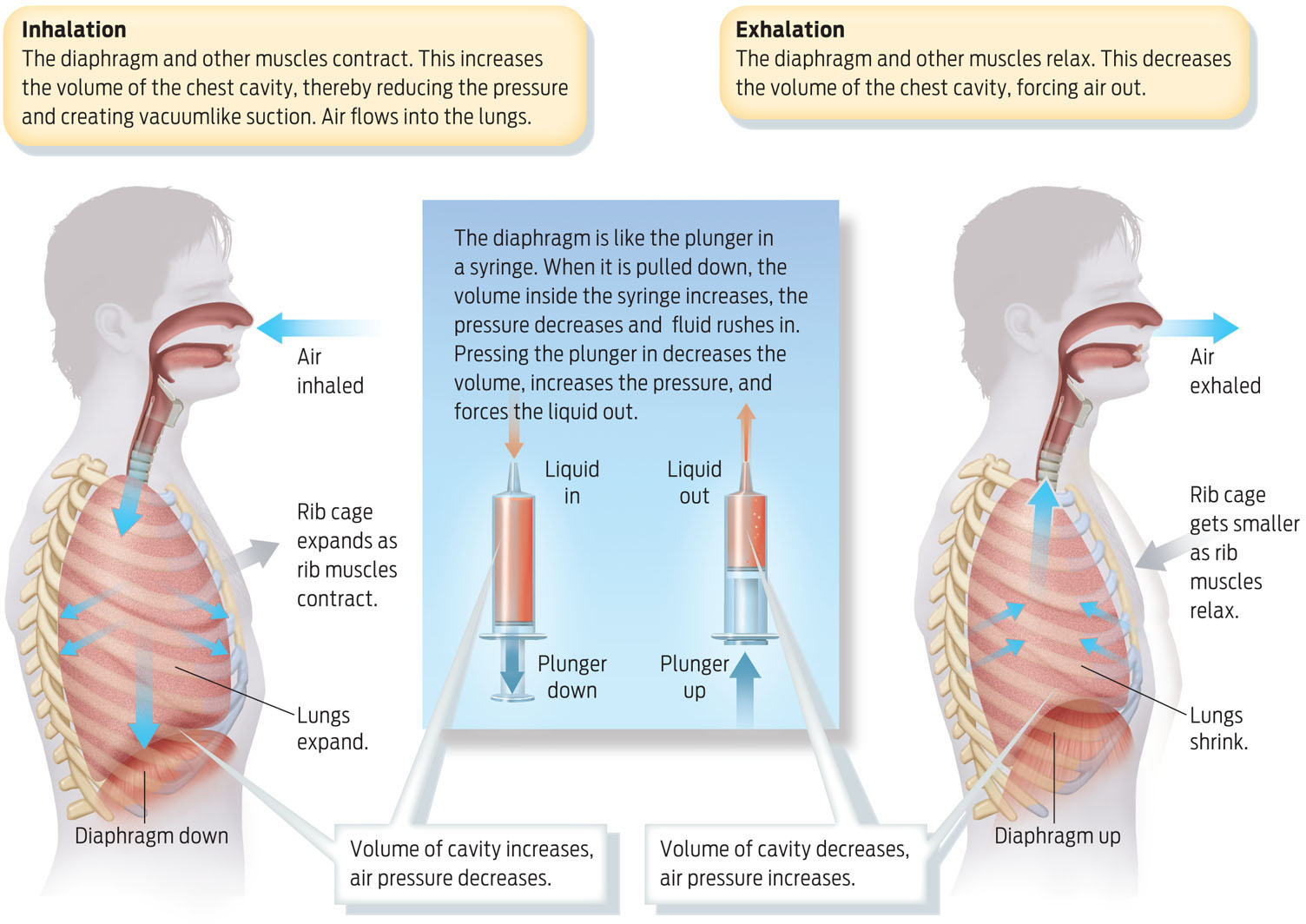EVERY BREATH YOU TAKE
VENTILATION The process of moving air in and out of the lungs.
Obviously, to take in oxygen, we need to breathe. But what exactly is breathing and how does it occur? Breathing is the way we ventilate our lungs. With every breath, we bring in a new volume of air for gas exchange at the respiratory surface, and then expel the waste products. If our lungs didn’t ventilate, the process of gas exchange would be much less efficient because there would be no way to move fresh air to the respiratory surface and get stale air out of the way.
DIAPHRAGM A sheet of muscle that contributes to breathing by contracting and relaxing.
On a mechanical level, breathing is the effect of a series of muscular movements of the diaphragm working in coordination with other muscles connected to the rib cage. As these muscles contract, the diaphragm moves downward and the rib cage moves outward, thereby increasing the size of the chest cavity overall. This sudden increase in the volume of the chest cavity has the effect of decreasing air pressure there, creating suction that draws air into the lungs. This is inhalation. As the muscles relax, the chest cavity contracts, and air is expelled. This is exhalation (INFOGRAPHIC 28.6).
The contraction and relaxation of the diaphragm and rib cage muscles ventilate the lungs. Contraction decreases pressure in the lungs and air flows in. Relaxation of the muscles forces air out of the lungs.

Athletes in general have greater lung capacity than the average person, which is partly why they can exercise longer, and harder, without getting as winded as someone who is not as fit. And while you can’t increase the size of your lungs, you can train the muscles of the chest to work more effectively, as many musicians and singers, as well as athletes, do. Exercising in a pool, for example, makes your chest muscles work harder, which strengthens them, ultimately enhancing lung capacity. Some populations of humans who live at high elevations (like the Bods, whose home, Ladakh, is at 11,500 feet in the Himalaya mountains), have wider chests with stronger chest muscles, permitting them to draw in more air in order to get sufficient oxygen.
ACIDOSIS A dangerous condition in which blood is too acidic.
Although getting oxygen is an essential part of breathing, the rate of our breathing is not actually determined by the demand for oxygen in our body. It’s actually carbon dioxide that is more important. When we exercise, we are using more oxygen and producing more carbon dioxide. The increased concentration of carbon dioxide in the blood causes a decrease in blood pH; when CO2 dissolves in the water in the blood—the plasma—it produces carbonic acid, which has a low pH (see Chapter 2). The brain senses this drop in pH and responds by sending a signal to the lungs to increase breathing rate. The increased breathing rate increases the rate of gas exchange, bringing more oxygen into the body while unloading excess carbon dioxide, and thus raising blood pH back to normal.
If for some reason a person is unable to unload carbon dioxide from the lungs, the concentration of CO2 in the blood can rise to dangerous levels, creating a potentially fatal condition known as acidosis.